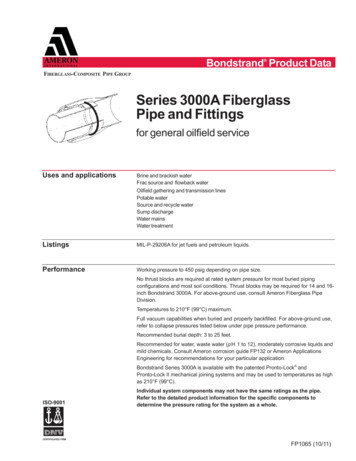BASIC CARDIAC ARRHYTHMIAS - CME Associates
BASIC CARDIAC ARRHYTHMIASRevised 10/2001A Basic Arrhythmia course is a recommended prerequisite for ACLS. A test willbe given that will require you to recognize cardiac arrest rhythms and the mostcommon bradycardias & tachycardias. Arrhythmias will be reviewed in teachingand skills stations in order to improve your skills. The instructors will assist youin developing skills to differentiate the rhythms required for successfulcompletion. Arrhythmia identification classes are available. Call our office forcourse information.
#1 Name of Rhythm and Description of Identifying Characteristic#2 Name of Rhythm and Description of Identifying Characteristic#3 Name of Rhythm and Description of Identifying Characteristic#4 Name of Rhythm and Description of Identifying Characteristic
#5 Name of Rhythm and Description of Identifying Characteristic#6 Name of Rhythm and Description of Identifying Characteristic#7 Name of Rhythm and Description of Identifying Characteristic#8 Name of Rhythm and Description of Identifying Characteristic
#9 Name of Rhythm and Description of Identifying Characteristic#10 Name of Rhythm and Description of Identifying Characteristic#11 Name of Rhythm and Description of Identifying Characteristic#12 Name of Rhythm and Description of Identifying Characteristic
#13 Name of Rhythm and Description of Identifying Characteristic#14 Name of Rhythm and Description of Identifying Characteristic#15 Name of Rhythm and Description of Identifying Characteristic#16 Name of Rhythm and Description of Identifying Characteristic
#17 Name of Rhythm and Description of Identifying Characteristic#18 Name of Rhythm and Description of Identifying Characteristic
Answers1.Sinus Bradycardia Regular rhythm, heart rate 60 There is a P wave before QRS and QRS after P wave2.2nd Degree Type I (aka Mobitz I or Wenckebach) Heart Block Irregular rhythm (grouped QRS's) P-R interval: progressive lengthening until beat is dropped3.Ventricular Fibrillation Chaotic, disorganized electrical depolarization of the ventricles4.Polymorphic Ventricular Tachycardia Torsades de Pointes “Twisting of the Points” This is a polymorphic Vtach in that the shape of the QRScomplexes varies significantly.5.Ventricular Tachycardia Regular rhythm; heart rate: 100; organized ventriculardepolarization This is a sustained monomorphic VTach.6.Third Degree Heart Block Ventricular rhythm and atrial rhythm are regular, but at differentrates (you have more Ps than QRSs); P-R intervals are variable. Theatria and ventricles are depolarizing independently.7.First Degree Heart Block Rhythm is regular; PR interval: .20 seconds8.Junctional or Nodal Rhythm Rhythm is regular; P wave before every QRS is invertedrepresenting retrograde depolarization from the nodal tissueinto the atria.9.Atrial Flutter No definable P waves; "sawtooth" appearing flutter waves fromatrial depolarization.10.Atrial Fibrillation Rhythm: irregular, no identifiable P waves. Chaotic fibrillatorydepolarization in the atria.
11.2nd Degree Type II (aka Mobitz II) Heart Block Atrial rate is faster than the ventricular rate (you have more Psthan QRSs) The P-R intervals are constant. This example isregular due to it dropping every other beat (2:1 conductionratio). 2nd degree Type II is more often an irregular rhythm.12.Sinus Rhythm with ST elevation The ST segment tells us about the status of the myocardium.This elevation may signify that injury is being done to the heart.In order to be diagnostic, a 12 lead EKG must be done to see ifthe elevation is seen in 2 or more consecutive leads.13.2nd Degree Type II (aka Mobitz II) Heart Block Atrial rate is faster than the ventricular rate (you have more Psthan QRSs) The P-R intervals are constant. This example isirregular due to it dropping every so often (variable conductionratio).14.Sinus Tachycardia with unifocal PVC's and couplets Underlying sinus rhythm 100; PVC's are shaped the same; twoPVC's together.15.Multifocal Atrial Tachycardia (MAT) Narrow complex tachycardia, irregular, with P waves of multipleshapes. This tachycardia is caused by “irritable foci” in theatria and does not respond to cardioversion.16.Paroxysmal Supraventricular Tachycardia (PSVT) Narrow complex tachycardia, usually regular of sudden onset.P waves may be present but difficult to identify due to the rate.This tachycardia is caused by a “reentry circuit” (repetitive loopof electrical impulses) within the conduction system. Reentrytachycardias usually respond well to Adenosine andcardioversion.17.Normal Sinus Rhythm Rate 60-100, rhythm regular, P waves present and upright, a Pfor every QRS. This strip was not taken in lead II. The QRS has a somewhatnegative deflection and the T wave is inverted simply due tolead placement. This strip was taken in MCL1.18.Sinus Rhythm with Ventricular Bigeminy A PVC is seen every other beat.
BASIC CARDIAC ARRHYTHMIAS. Revised 10/2001 . A Basic Arrhythmia course is a recommended prerequisite for ACLS. A test will be given that will require you to recognize cardiac arrest rhythms and the most common bradycardias & tachycardias. Arrhythmias will be reviewed in teac
Air Force CME Director: Accredited CME provider by the Accreditation Council on Continuing Medical Education. The Air Force CME Office administers the CME Program and is the proponent for CME policies and procedures. Has responsibility for maintaining the accreditation and functionality of the CME website. When the CME Director leaves the position,
CARDIAC ELECTROPHYSIOLOGY, ARRHYTHMIAS AND PACING Medical Knowledge Goals and Objectives PF EF MF LF Aspirational Know the protocols and diagnostic value of invasive X studies of cardiac conduction including sinus node function test and studies of intra-atrial, AV nodal and
Advanced cardiac life support (ACLS) is a two day course that teaches students to recognize and treat cardiac arrest, arrhythmias, acute coronary syndromes, stroke, cardiac arrest in the pregnant woman, and cardiac arrest in situations involvi
Passed PANCE/PANRE Passed PANCE/PANRE CME 1 and CME 2 Year 1-2 Year 3-4 Year 5-6 Year 7-8 Year 9-10 CME 1 50 credits 50 credits 50 credits 50 credits 50 credits CME 2 50 credits 50 credits 50 credits 50 credits 50 credits How to Maximize Credit SA 1.5X PI 2X SA 1.5X PI 2X SA 1.5X PI 2X SA 1.5X PI 2X SA 1.5X PI 2X
RSACP CME MUMBAI : Dr Chandrakant Patel Sep/Oct 2018 RSACP CME ODISHA : Dr Rekha Das Oct 2018 RSACP CME MUMBAI : Dr Indrani H. Kumar Dec 2018 RSACP CME PUDUCHERRY: Dr Vijayalakshmi Oct 2018 - Feb 2019 IT WAS APPROVED UNANIMOUSLY BY THE HOUSE THAT FINANCIAL AID OF 20,000 INR SHALL BE GIVEN BY THE SOCIETY FOR ORGANIZING CME /
Metabolism - An Update 501 CME 3 (16:15-17:45) Inflammation & Infection Committee The Battle Continues - WBC Scan vs FDG PET/CT 1101 CME 7 (15:05-16:35) Physics Dosimetry Committee Developments and Challenges in Theranostics 1601 CME 11 (15:05-16:35) Bone & Joint Committee New Concepts for Imaging and Therapy of Bone Metastases 601 CME 4 (18 .
License Renewal & CME 64 of 69 state/territory jurisdictions require CME Little specificity regarding relevance to practice - 14 boards (in 12 states) require some link of CME to practice area Requirements vary across jurisdictions - Number of required CME hours (20-50/year) - 24 jurisdictions (in 18 states ) have content-specific
Pipe Size ASTM Designation (in) (mm) (D2310) (D2996) 2 - 6 50 - 150 RTRP 11FX RTRP 11FX-5430 8 - 16 200 - 400 RTRP 11FX RTRP 11FX-3210 Fittings 2 to 6-inch Compression-molded fiberglass reinforced epoxy elbows and tees Filament-wound and/or mitered crosses, wyes, laterals and reducers 8 to 16-inch Filament-wound fiberglass reinforced epoxy elbows Filament-wound and/or mitered crosses, wyes .























